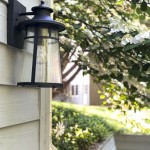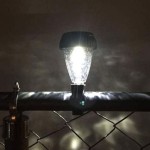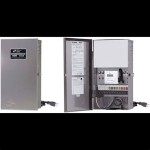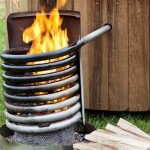Best Lights For Outdoor Umbrella: Illuminating Your Patio Paradise
Outdoor umbrellas provide valuable shade during daylight hours, but with the addition of appropriate lighting, they can transform into focal points for evening gatherings and enhance the overall ambiance of an outdoor space. Choosing the best lights for an outdoor umbrella involves considering factors such as brightness, power source, weather resistance, style, and ease of installation. This article explores various lighting options and key considerations to ensure a well-lit and inviting outdoor setting.
Brightness and Light Distribution
The primary function of umbrella lights is to provide sufficient illumination for activities such as dining, reading, or simply socializing. The required brightness depends on the size of the umbrella and the intended use of the area beneath it. Lights with adjustable brightness settings offer flexibility, allowing users to customize the light output based on the occasion.
Light distribution is also crucial. Lights that cast a wide, even glow are preferable to those that produce harsh, focused beams. Options like LED string lights or lights with diffusers can help create a more pleasant and uniform illumination. Consider the lumen output of the lights, with higher lumen values indicating greater brightness. For general ambient lighting, a lower lumen output may suffice, while tasks like reading or dining may require more intense illumination.
Color temperature also plays a role in the ambiance. Warmer light (around 2700-3000K) creates a cozy and relaxing atmosphere, while cooler light (around 4000-5000K) provides a brighter and more energetic feel. Choose a color temperature that complements the overall style of the outdoor space and the desired mood.
Power Source Options: Batteries, Solar, and Electric
The choice of power source depends on factors such as convenience, accessibility to electrical outlets, and environmental considerations. Each power source has its own advantages and disadvantages.
Battery-Operated Lights: Battery-operated lights are a convenient option for umbrellas located far from electrical outlets. They are typically easy to install and require no wiring. However, they require periodic battery replacement, which can be a recurring cost. Consider using rechargeable batteries to minimize waste and reduce expenses. The lifespan of the batteries will depend on the type of batteries used and the brightness setting of the lights.
Solar-Powered Lights: Solar-powered lights are an environmentally friendly option that harnesses the sun's energy. They are self-sufficient and require no external power source. However, their performance depends on the amount of sunlight they receive. In areas with limited sunlight, their brightness and lifespan may be reduced. Also, solar lights often have a lower lumen output compared to battery-operated or electric lights. Look for solar lights with a high-capacity battery and a large solar panel for optimal performance.
Electric-Powered Lights: Electric-powered lights offer consistent brightness and are not subject to fluctuations in sunlight or battery life. However, they require access to an electrical outlet. This can be a limitation for umbrellas located in areas without readily available power. If using electric-powered lights, ensure that the extension cords and outlets are rated for outdoor use and are properly protected from the elements. Using a ground fault circuit interrupter (GFCI) outlet is crucial for safety.
Types of Umbrella Lights: String Lights, Clip-on Lights, and More
The market offers a variety of umbrella lighting options, each with its own aesthetic and functional characteristics. Understanding the different types can help in selecting the most appropriate lights for specific needs and preferences.
String Lights: String lights are a popular choice for creating a festive and inviting atmosphere. They can be draped along the umbrella's ribs or wrapped around the pole. LED string lights are energy-efficient and long-lasting. Look for string lights with weather-resistant construction and durable wiring. The spacing between the lights can vary, so choose a density that provides the desired level of illumination. Some string lights have multiple lighting modes, such as flashing or fading, which can add visual interest.
Clip-on Lights: Clip-on lights are designed to attach directly to the umbrella's ribs. They are easy to install and reposition. These lights typically use LED bulbs and are available in various styles and finishes. Look for clip-on lights with a strong grip to ensure they stay securely attached to the umbrella. Consider the size and weight of the lights to avoid putting excessive strain on the umbrella's structure.
Hub Lights: Hub lights are designed to be mounted at the center of the umbrella, providing a concentrated source of light. They often feature a multi-directional design, allowing the user to adjust the angle of the light. Hub lights are a good option for providing targeted illumination for activities such as dining or reading. Look for hub lights with adjustable brightness settings and a durable construction.
Strip Lights: LED strip lights can be attached to the underside of the umbrella canopy, providing a subtle and even glow. They are typically flexible and can be easily customized to fit the shape of the umbrella. Look for strip lights with an adhesive backing that is suitable for outdoor use. The color of the LED strip lights can be chosen to match the desired ambiance.
Weather Resistance and Durability
Outdoor umbrella lights are exposed to the elements, including rain, wind, and sunlight. Therefore, it is essential to choose lights that are specifically designed for outdoor use and are rated for weather resistance. Look for lights with an Ingress Protection (IP) rating of IP44 or higher, indicating that they are protected against splashing water and solid objects. A higher IP rating provides greater protection. The materials used in the construction of the lights should also be durable and resistant to corrosion. Stainless steel, aluminum, and high-quality plastics are good choices. Regularly inspect the lights for signs of damage or wear and tear, and replace them as needed.
Installation and Maintenance
The ease of installation is an important consideration, especially for renters or those who prefer not to do complicated wiring. Battery-operated and solar-powered lights are generally easier to install than electric-powered lights. Follow the manufacturer's instructions carefully to ensure proper installation. Regularly clean the lights to remove dirt and debris, which can reduce their brightness. Check the batteries periodically and replace them as needed. For electric-powered lights, inspect the wiring and connections for any signs of damage. Store the lights indoors during periods of inclement weather or when they are not in use to prolong their lifespan.
Consider the method of securing the lights to the umbrella. Some lights come with clips, while others require zip ties or adhesive strips. Choose a method that is secure and will not damage the umbrella's fabric or frame. Avoid overloading the umbrella with too many lights, as this can put excessive strain on the structure. Distribute the weight of the lights evenly to maintain balance.
Style and Aesthetics
The style of the umbrella lights should complement the overall aesthetic of the outdoor space. Choose lights that match the color and design of the umbrella and the surrounding furniture. Consider the shape and size of the lights, as well as the materials they are made from. For a modern look, opt for sleek and minimalist lights. For a more rustic or traditional look, choose lights with a more ornate design. The goal is to create a cohesive and visually appealing outdoor setting.
The color of the light emitted by the umbrella lights can also affect the ambiance. Warmer colors, such as amber or yellow, create a cozy and inviting atmosphere, while cooler colors, such as blue or white, provide a brighter and more modern look. Experiment with different colors to find the perfect balance for the outdoor space.
Energy Efficiency and Bulb Type
Choosing energy-efficient lights not only saves money on electricity bills but also reduces the environmental impact. LED bulbs are the most energy-efficient option, consuming up to 80% less energy than traditional incandescent bulbs. They also have a much longer lifespan, typically lasting for tens of thousands of hours. Look for LED lights with a high lumen-per-watt ratio, indicating greater energy efficiency. Consider using dimmer switches to further reduce energy consumption and customize the brightness of the lights.
The type of bulb used in the umbrella lights can also affect the color and quality of the light. LED bulbs are available in a wide range of colors and color temperatures, allowing users to choose the perfect lighting for their needs. Halogen bulbs produce a bright, white light, but they are less energy-efficient than LED bulbs and have a shorter lifespan. Incandescent bulbs are the least energy-efficient option and are typically not recommended for outdoor use.
Safety Considerations
Safety is paramount when choosing and installing outdoor umbrella lights. Ensure that all electrical connections are properly insulated and protected from the elements. Use only extension cords and outlets that are rated for outdoor use. Avoid overloading electrical circuits, as this can create a fire hazard. Regularly inspect the lights for any signs of damage or wear and tear. Replace any damaged lights immediately. Keep the lights away from flammable materials, such as curtains or tablecloths. Never use water to extinguish an electrical fire. Use a fire extinguisher specifically designed for electrical fires.
When installing umbrella lights, be careful not to damage the umbrella's fabric or frame. Avoid using sharp objects that could puncture the fabric. Secure the lights properly to prevent them from falling and causing injury. If using string lights, make sure they are not tangled or obstructing walkways. Avoid using lights that emit excessive heat, as this can be a fire hazard. Always turn off the lights when they are not in use.

10 Most Popular Outdoor Umbrella Lights For 2024 The Jerum Post

Brighten Up Your Patio Nights With The Best Umbrella Lights
The 10 Best Patio Umbrellas With Lights To Make Your Backyard Feel Magical

The 10 Best Patio Umbrellas With Lights Of 2024 Purewow

10 Beautiful Outdoor Spaces That Will Make You Rethink Your Cur Backyard Patio Umbrella Lights Best Diy Lighting

The 10 Best Patio Umbrellas With Lights Of 2024 Purewow

Best Choice S 7 5ft Outdoor Solar Patio Umbrella For Deck Pool W Tilt Crank Led Lights Gray Com

The Best Outdoor String Lights Of 2024 Top Picks

Brighten Up Your Patio Nights With The Best Umbrella Lights

The 10 Best Patio Umbrellas With Lights Of 2024 Purewow
Related Posts







